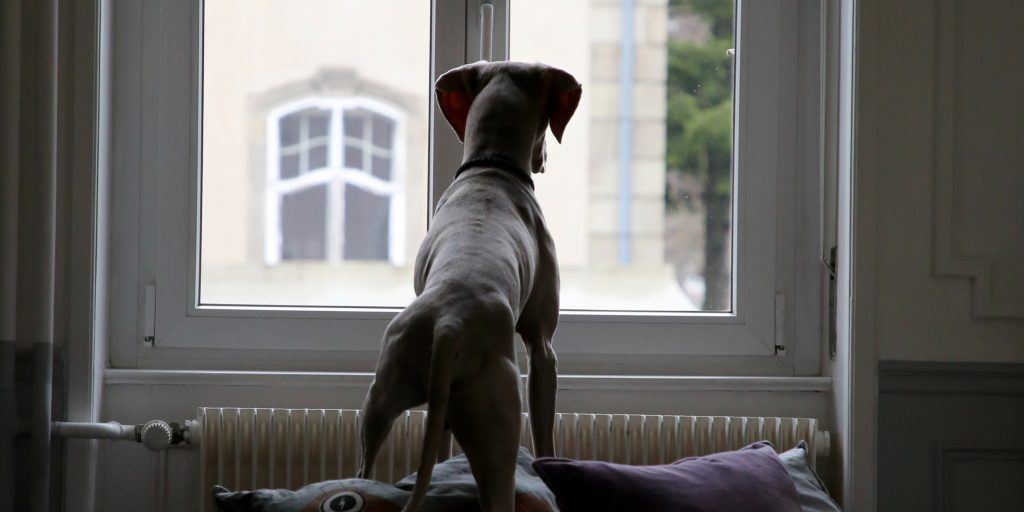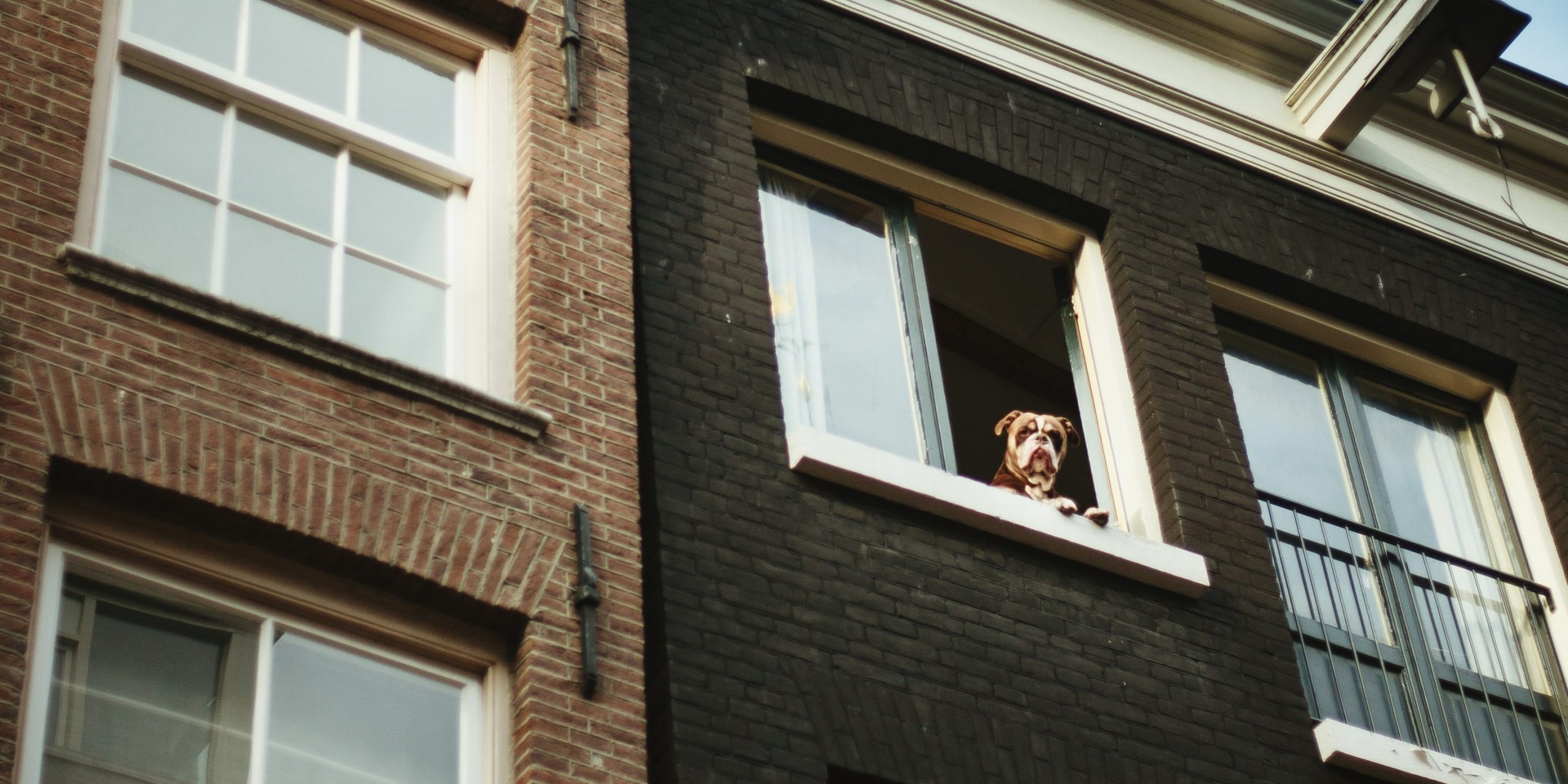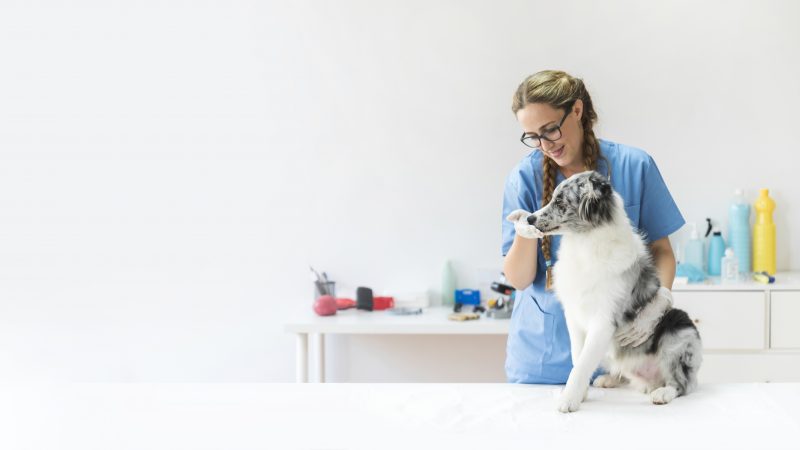First, Are You Allowed and Is It Safe?
Before you even get your heart set on a pup, you need to make sure you’re actually allowed a dog in the apartment. If you’re renting, that means chatting to your landlord about apartment dogs and reviewing rental laws concerning pets in your state. We have a handy breakdown about that here.
If you can’t get permission, don’t risk it. Having a secret pet, getting busted, or being forced to give up the dog is a lot of stress for everyone. Even owners need to check with their body corporate for regulations–chances are there will still be rules and limitations concerning pets.
Even if you’re allowed a pet in your apartment, you’ll still need to decide if the space is a good fit. Is there a balcony or easily accessible windows they could fall from? How soundproof is the space? Can your floors stand it? How hot does it get during the day? Are there open spaces nearby where your dog can regularly walk and play? If your pet is older can they manage the stairs or is there an elevator?
Choose the Right Breed
One of the biggest factors in raising a happy small apartment dog is choosing the right breed. It’s not fair to expect a pet that needs endless room, exercise, or stimulation to be happy in a one-bedroom on the 12th floor. Farm breeds such as Australian shepherds, border collies, and golden retrievers can struggle in apartments.
Also, don’t assume that all small dogs will enjoy a small apartment. Energetic breeds like terriers can be too restless and noisy to enjoy the confined space. Often, lower energy larger breeds can be happier to chill on the couch all day.
Finally, remember your neighbours in all of this. How will the dog be experienced outside of the apartment. A very vocal breed might not bother you, but it could drive everyone else on your floor crazy.
The Best Small Apartment Dogs
As a general rule small, quiet, easy to train breeds do well in apartments. Some top options include: cavalier King Charles spaniels, Brussels griffons, basenjis, pugs, Frenchies, chihuahuas, dachshunds, Japanese chins, malteses, pekineses, pomeranians, and shih tzus.
As mentioned some larger, relaxed breeds, who don’t have a strong protective instinct can also do well. Poodles, bulldog, and greyhounds are all popular small apartment dogs. Even St. Bernards and great Danes are often recommended. Just remember, no matter how quiet a huge dog will still take up a lot of space.

Keeping Small Apartment Dogs Happy
The general rule is (the right) dogs don’t need a huge amount of space as long as they’re getting regular exercise. Outside of bathroom breaks (more on that later) small apartment dogs should get at least two decent walks a day. If you have a park or open area nearby, it’s also nice for them to have time off-leash to really burn some energy. This isn’t just about getting a workout, but also giving them a chance to socialise with people and other animals.
If that isn’t possible, consider hiring a dog walker to take them to doggy daycare. Dogs that spend a lot of time home alone also need additional mental stimulation. Invest in puzzle feeders and interactive smart toys to stop them getting bored–or make your own!
Boredom can lead to destructive behaviour, so best for everyone (and your furniture) to keep them entertained.
Toilet Training Small Apartment Dogs
Now for the topic we’ve all been waiting for. Most apartment dogs will need to be taken out multiple times a day to use the bathroom. Remember, no matter the weather/schedule/hangover your pet will need to be taken out early each morning.
It’s important to establish a schedule around toilet breaks. This will allow them to get used to holding and reduce accidents and anxiety.
If your pet is older, frequently needs to go in the night, or you are out during the day, you can also consider making a bathroom area on your balcony with a portable pet toilet. Although these aren’t ideal for regular use.
Keeping You Happy
So far this article has been focused on the dog’s needs, but it’s worth keeping in mind the reality that in a small space you can start feeling like the pet. To ensure the dog doesn’t take over the whole apartment make sure they have their own designated area to play, eat, destroy bones, and generally make a mess.
Not only will that contain their debris, but having their own spot can also help them relax and feel safe. Crate training can also be a good option.
Other Things to Think About
Before you choose a dog, pay attention to what it feels like to live in your apartment. Do you have noisy neighbours, or is there a lot of construction in your neighbourhood that could set off a skittish pet? Some owners choose to adopt older dogs so they can better judge their personality and suitability for apartment life.
As with all areas of your pet’s life, proper socialisation and training or puppy school will go a long way in making sure you can share the (small) space peacefully.
Thinking about getting a dog? Check out:
A State-by-State Breakdown of Pet Rental Laws Around Australia
What You Need to Know about Crate Training Your Dog
Should we get a dog? What you need to know
While you’re here, subscribe to our newsletter, check out our magazine, and follow us on Instagram, Facebook, and Twitter.







